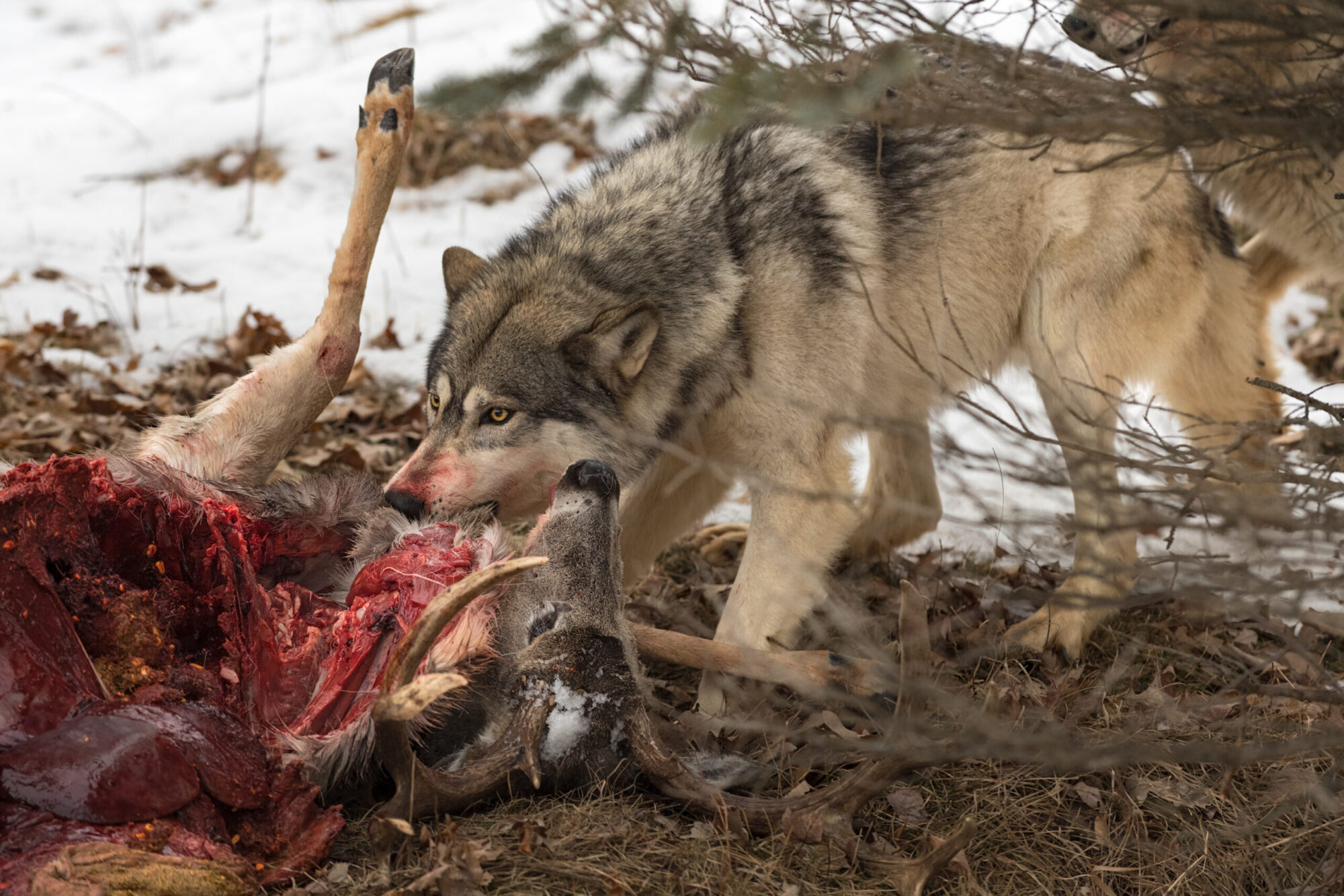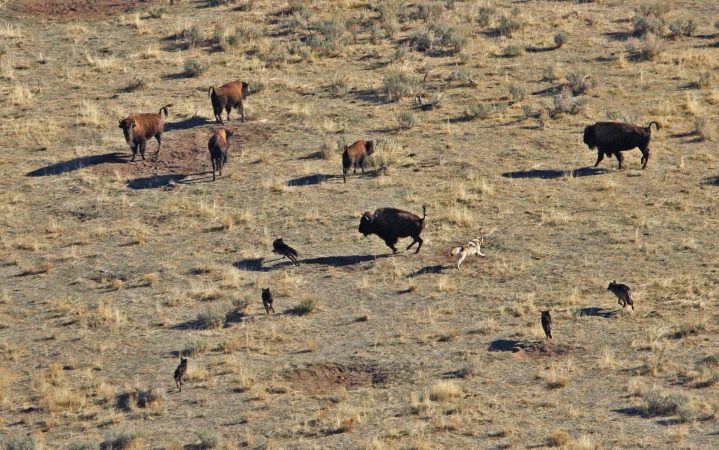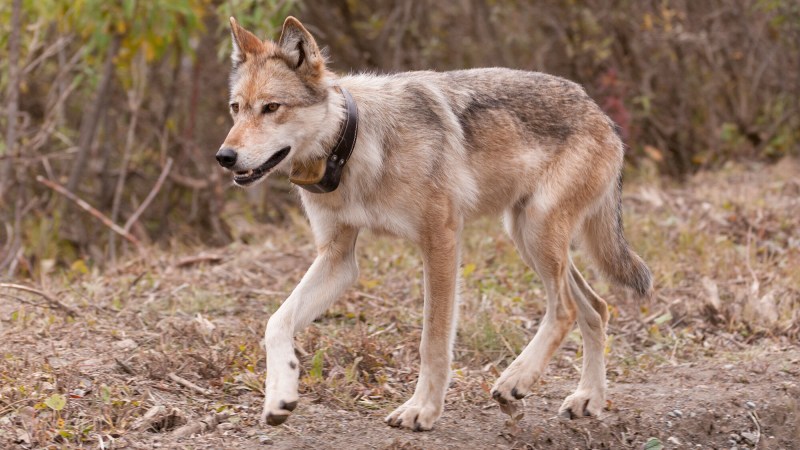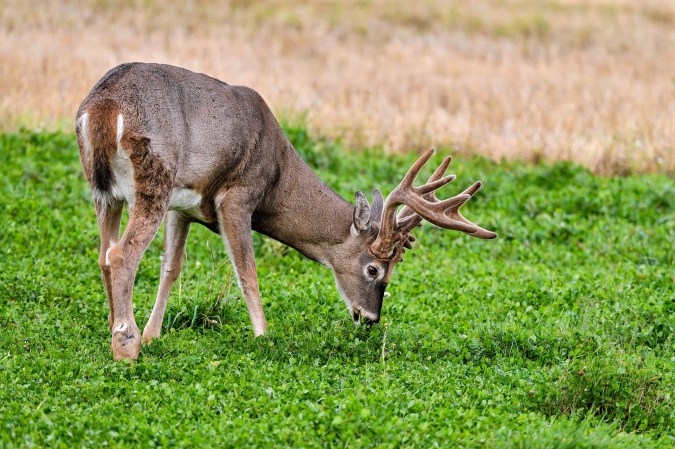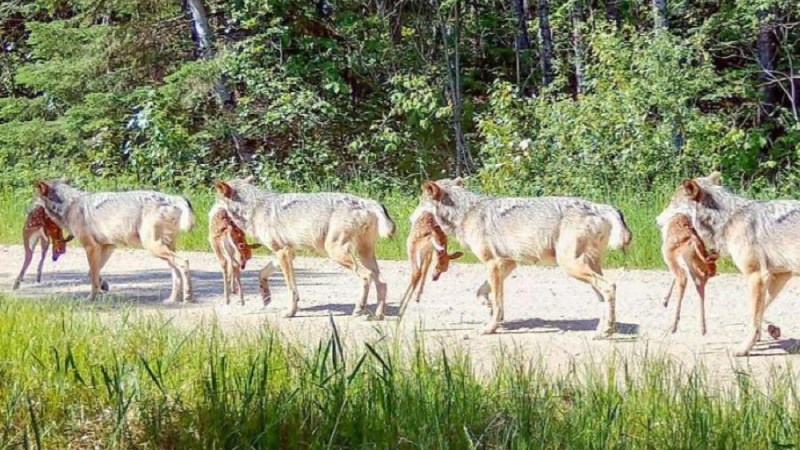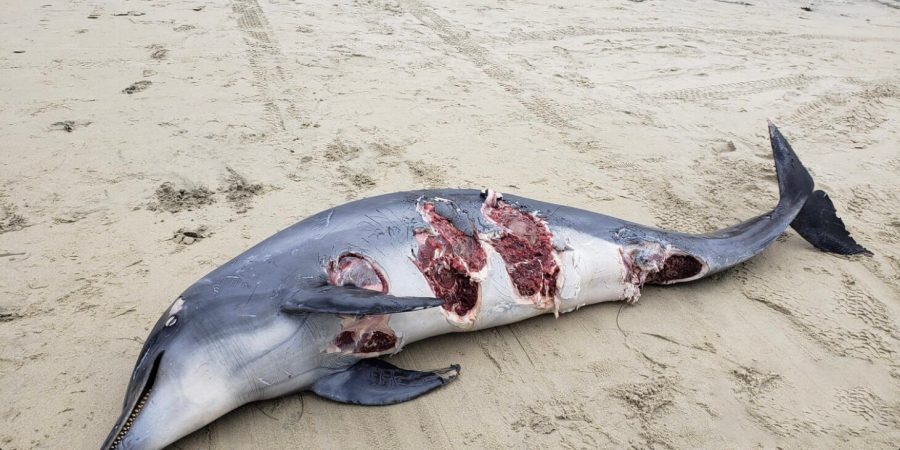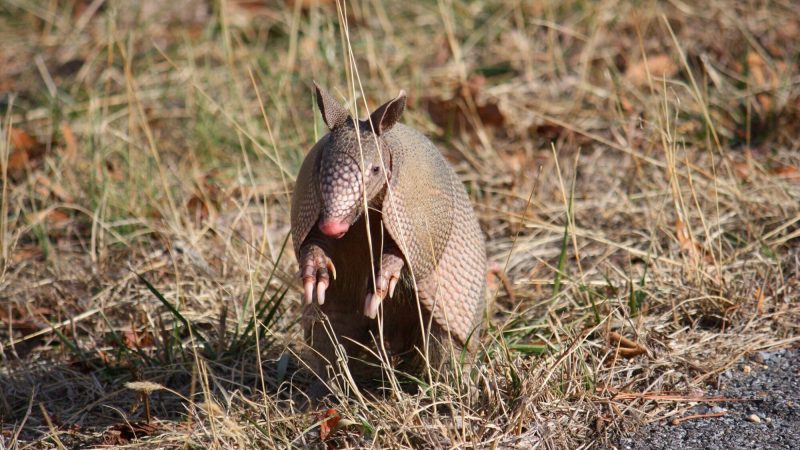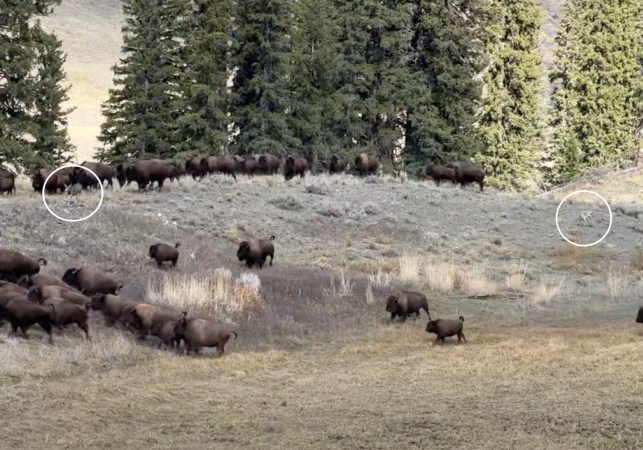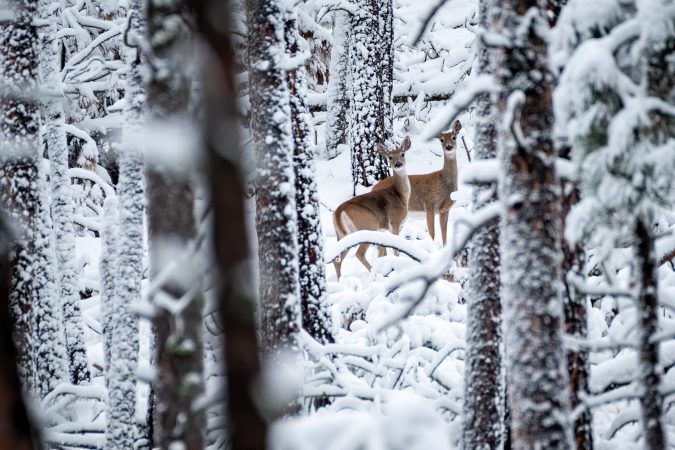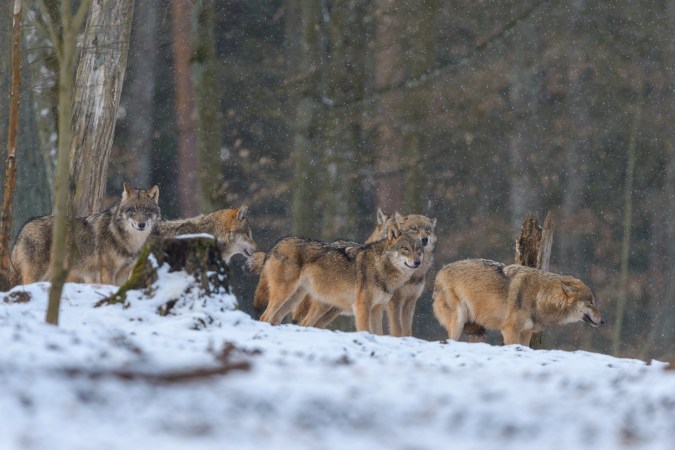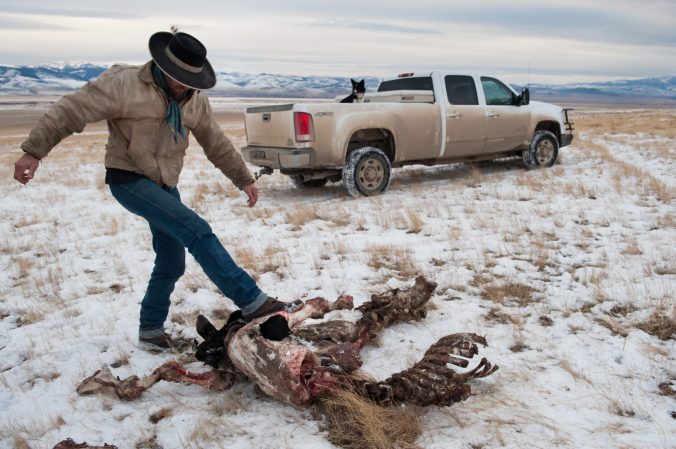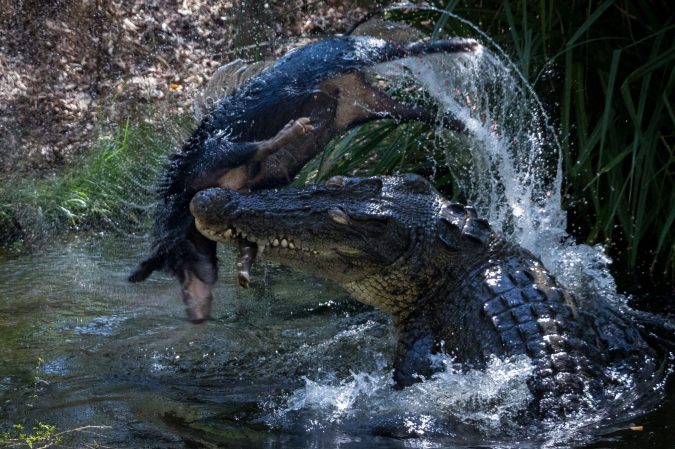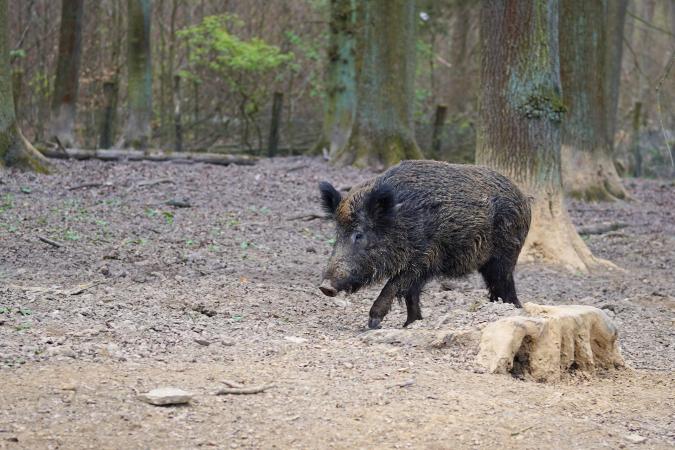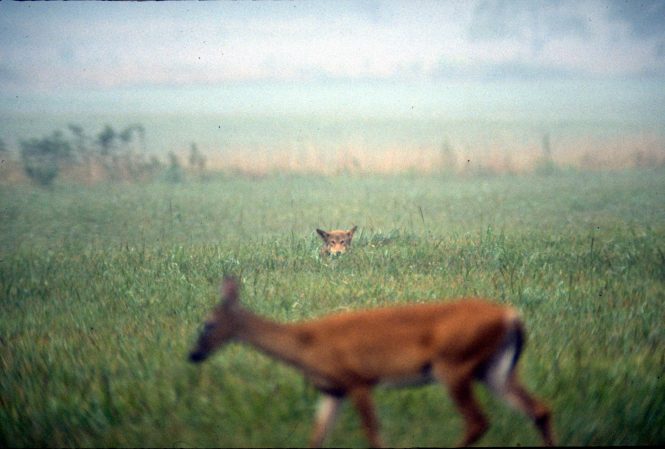With wolf populations on the rise in places like the Upper Midwest and the Mountain West, hunters, ranchers, and other outdoorsmen and women might be curious: what do wolves eat? Maybe you have direct experience with wolf kills, either in your own pastures or in the backcountry you frequent during elk season. Or maybe you’ve only ever encountered wolves from a distance in Yellowstone National Park. Either way, these contentious carnivores are notorious for their hunting methods, their territorial nature, and their kill sites.
A Wolf’s Top Food Sources
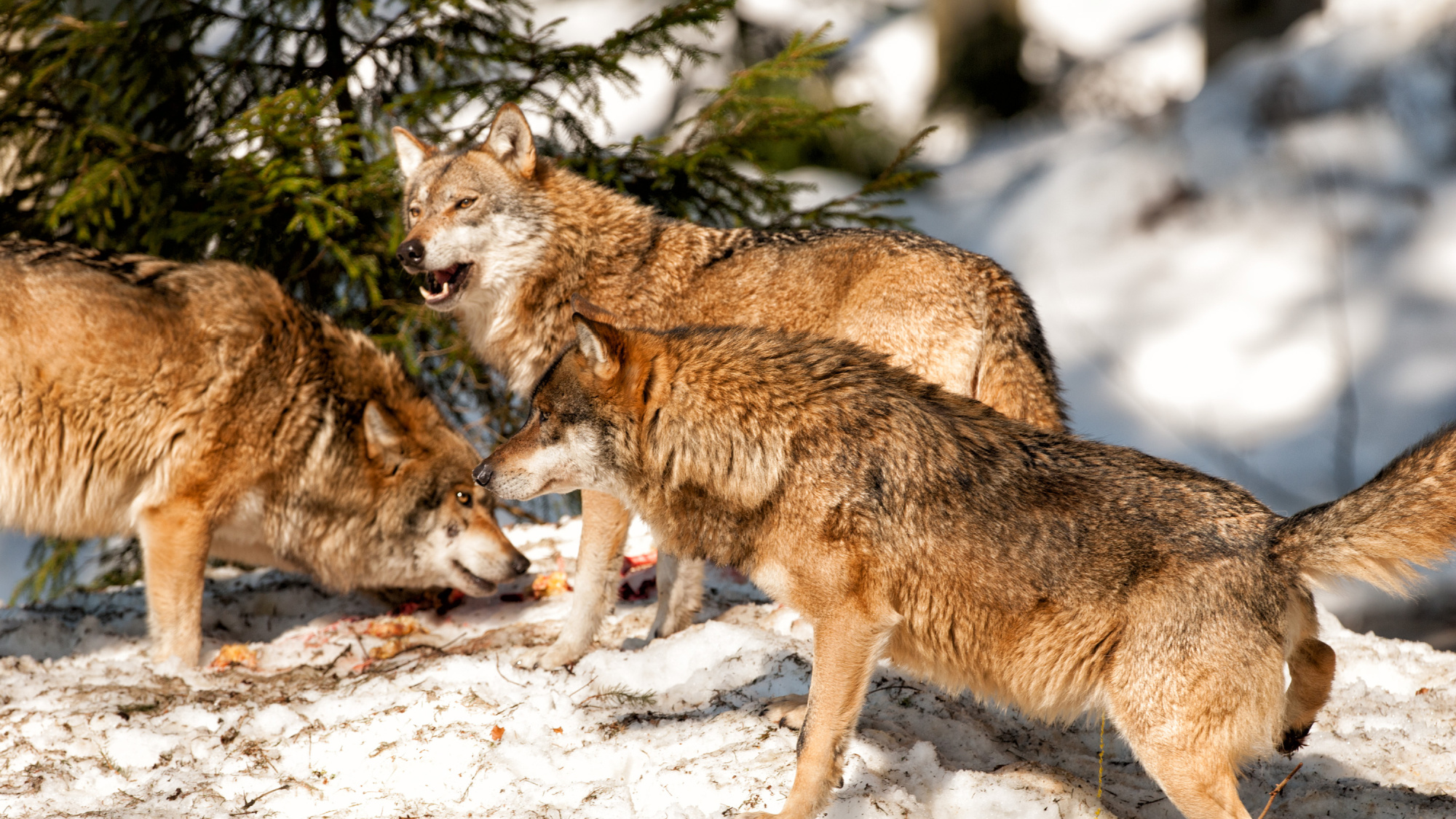
Just like any other wild animal, a gray wolf’s diet depends on where it lives on the continent, Yellowstone Wolf Project technician Taylor Rabe tells Outdoor Life. Wolves reside in a spectrum of habitats. They live in the woods of the Upper Midwest and the West’s peaks and valleys, and even the Alaskan tundra. They’ve evolved in all these places to feed on what’s readily available. That availability changes depending on the region’s latitude and longitude. In most cases, those abundant food sources are large herbivores.
Wolves in the West
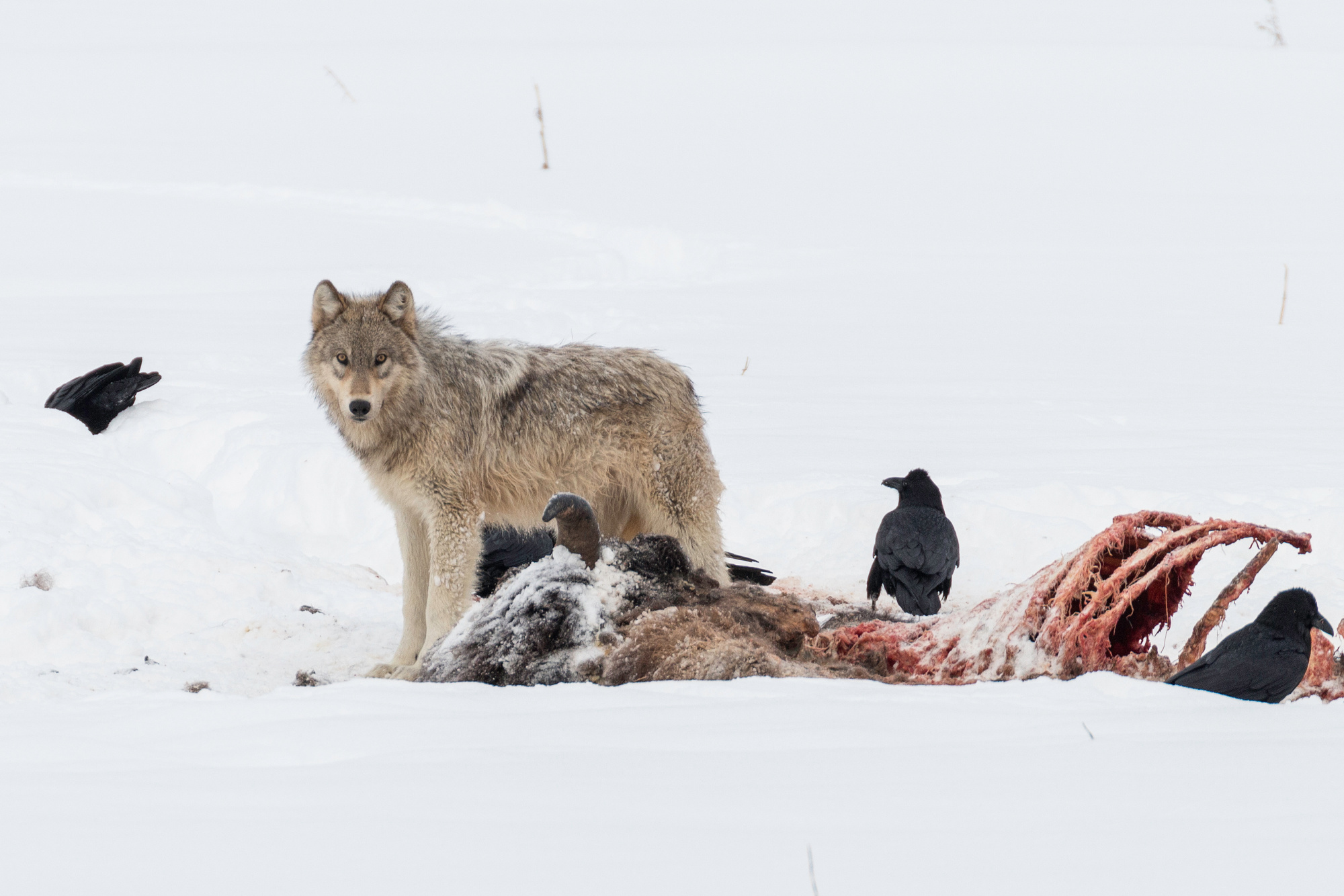
In Yellowstone National Park and around the West, wolves have access to ample wild ungulates like elk, deer, and pronghorn, Rabe says. In the Pacific Northwest, they feed on moose in addition to elk and deer. They also have access to bison in Yellowstone and some other scattered parts of the region.
“In Yellowstone National Park, about 80 percent of our wolves’ diet is elk,” Rabe says. “About 15 to 20 percent of their diet is bison. Wolves are opportunistic, [which means] they will take something if the opportunity presents itself. We see them forage on small rodents (mice, ground squirrels, rabbits), sometimes fish, beavers, and the occasional pronghorn or deer.”
Yellowstone’s elk number between 10,000 and 20,000 in the summer. The wintering population is lower, with around 4,000 elk.
Wolves also prey on livestock in the agriculture-rich West. From eastern Washington to northern Colorado, ranchers in wolf country are forced to stay diligent about protecting their herds. Still, wolf kills make up a small slice of the livestock depredation pie every year, according to a 2020 report from the Colorado State University Extension. In 2015, wolves killed 2,040 cattle nationwide, comprising 4.9 percent of all predator-caused mortalities. (Coyotes, by contrast, caused 40.5 percent.)
Upper Midwest Wolves
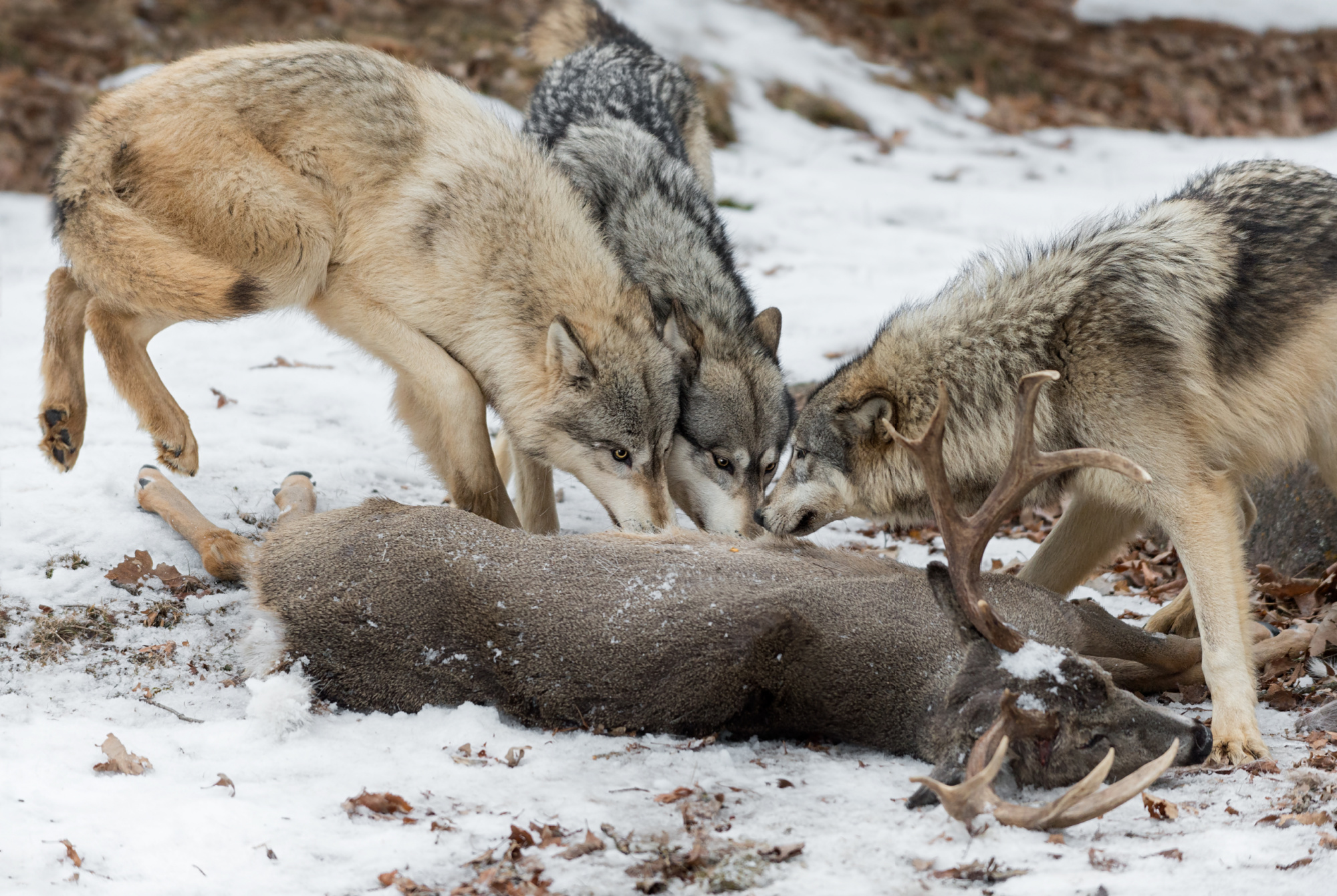
Gray wolves are also abundant in the Upper Midwest, specifically in northern Minnesota, northern Wisconsin, and Michigan’s Upper Peninsula. These wolves rely largely on whitetail deer, beavers, and moose (three widely prevalent prey species) for food.
Even within this single region, a wolf’s diet varies, Rabe says. Wolves might eat fish and even blueberries in Voyageurs National Park, if they’re hungry enough. Moose comprise most of their diet in places like Isle Royale National Park in Michigan. In certain parts of the region, they eat so many beavers that the hydrology of the whole ecosystem changes, one study shows. This flexibility to eat whatever the landscape provides is crucial to wolf survival and population growth. Without this adaptability, they wouldn’t be able to roam and adopt new territories as their numbers continue to increase.
Like wolves in the Mountain West, they also prey on livestock. Wolves were confirmed to have killed 28 cattle, 10 chickens, and five sheep in Wisconsin in 2022, according to the state’s annual livestock depredation report. And as a different report from the U.S. Department of Agriculture points out, wolves are responsible for depredations on about 1 to 2 percent of ranches in the Upper Midwestern wolf range annually. However, the report also highlights how these depredations can occur to the same producers multiple times. This makes them a repeat nuisance—or outright threat to the bottom line—for a handful of ranchers rather than the ranching community at large.
Alaskan Wolves
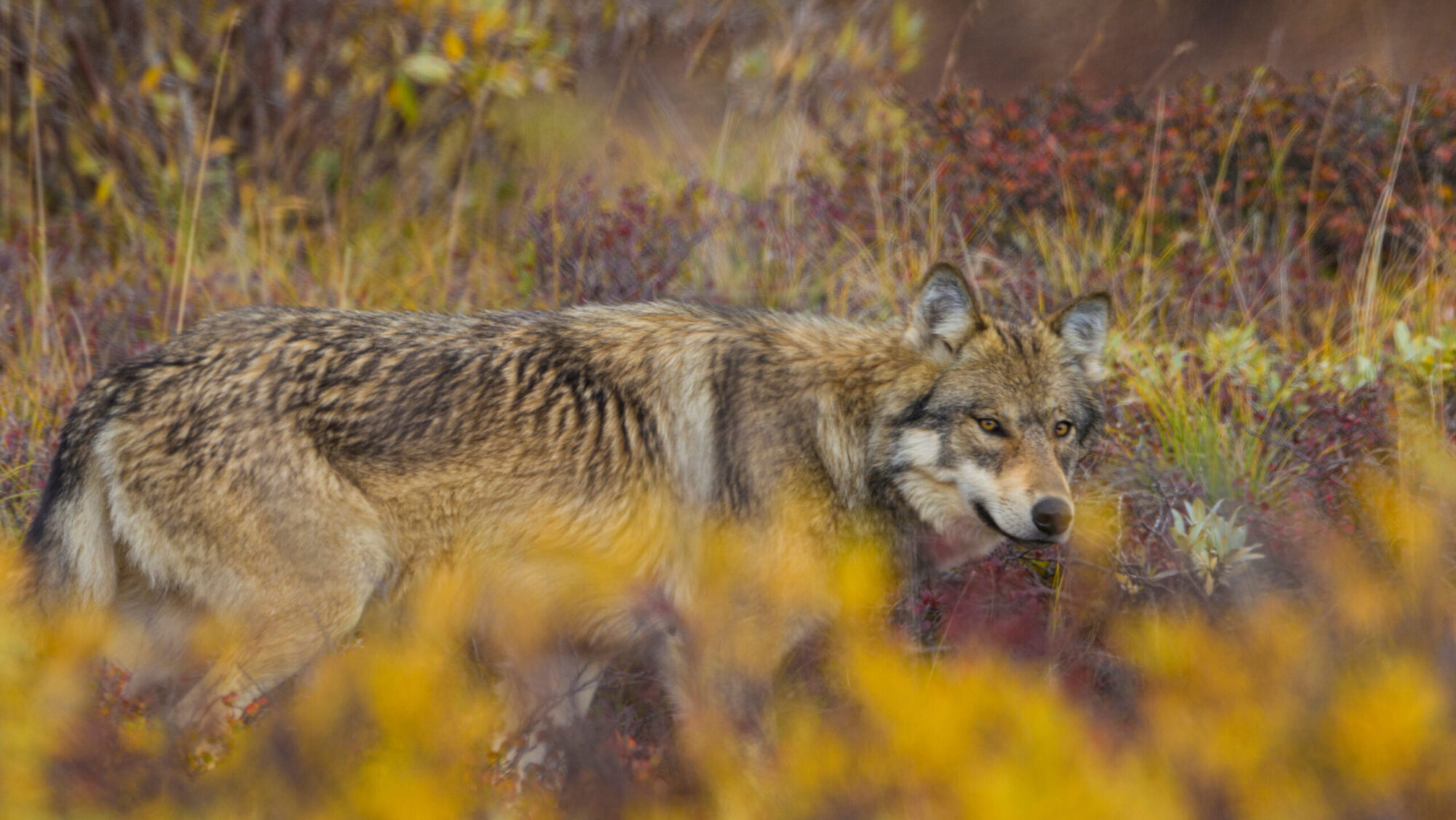
While it’s tricky to nail down an exact count, biologists estimate Alaska is home to 7,000 to 11,000 wolves. Pretty much all of mainland Alaska is considered wolf range, with some exceptions in urban areas. Moose and caribou are the two mainstays of an Alaskan wolf’s diet. Sitka blacktail deer, Dall sheep, squirrels, snowshoe hares, beavers, and the occasional birds and fish also fill their bellies depending on what region of Alaska they live in.
Other Food Sources for Wolves
Wolves supplement their diets with other interesting sources of food. They overpower mountain lions to steal their food (likely killing a few in the process). In Italy, wolves prefer to feed on the fast-growing population of feral pigs over most other food sources. They prey on mountain goats in Alaska, and regularly chase down musk ox calves in the Arctic.

A Wolf Diet Through the Seasons
Wolves use seasonal changes to their advantage when considering which individuals to hunt. They target healthier, bigger adult prey in the winter when they’re more likely to be weak and hungry. During other times of year, they target newborns and older or sick individuals that will be easier to take down.
“In the winter months [in Yellowstone], wolves are primarily feeding on adult elk and bison,” she says. “Usually elk and bison are very weak at this time of year due to the harsh winter conditions, so the wolves will monopolize on that. In the summer months, most of their prey is very strong and healthy, so wolves are primarily feeding on neonates—newborn elk and bison calves, and sometimes even pronghorn calves. They’re also doing a lot of solo hunting in the summer months, so they’re really taking advantage of those smaller rodents as well.”
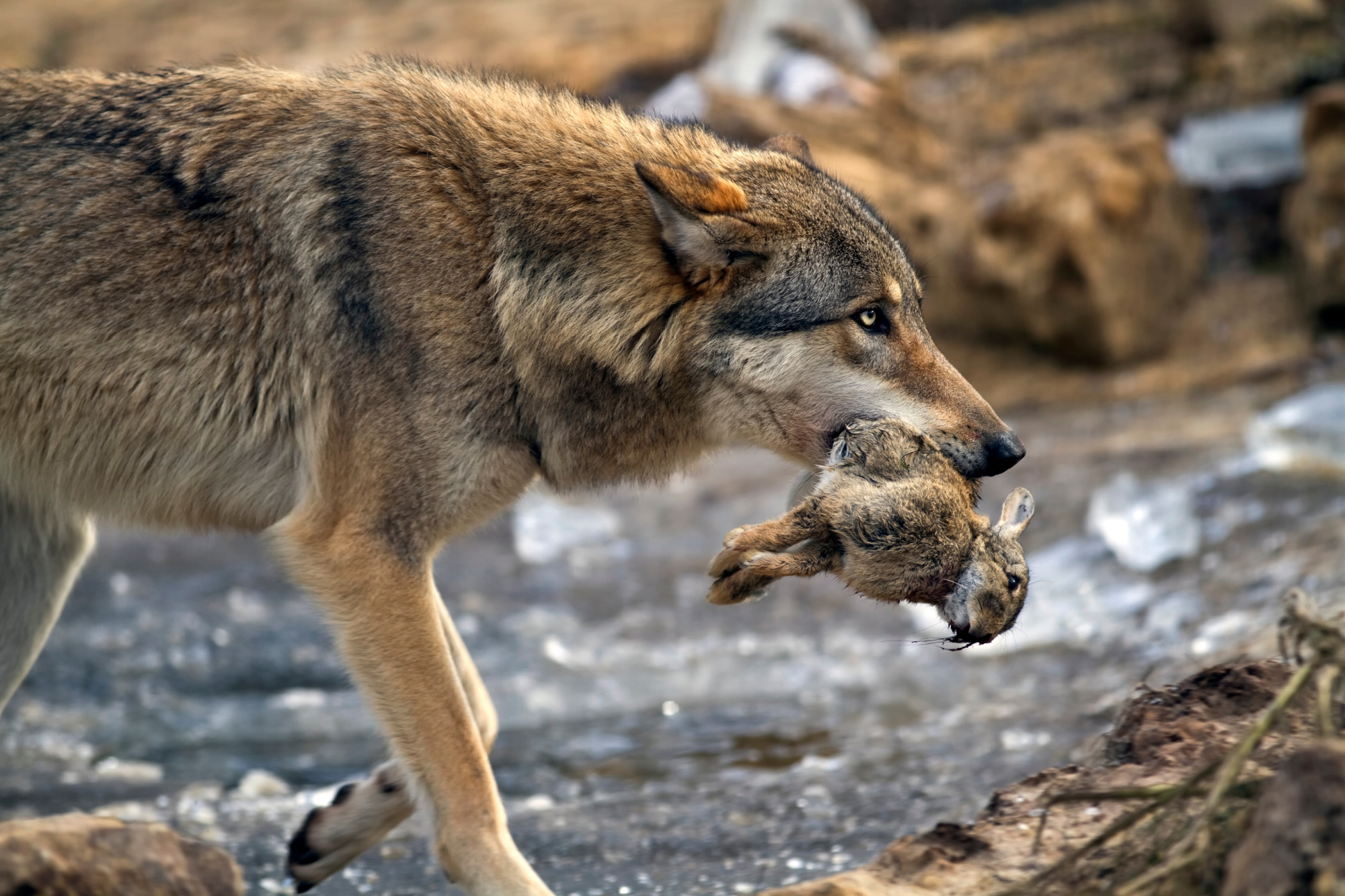
Many of the species that wolves rely on are migratory. This means their diets might shift with the seasonal movements of those prey species. Their competition also changes throughout the year. For example, when bears are inactive in the winter, wolves don’t have to protect their food stores as much from the large scavengers. (Smaller scavengers, wild cats, and competition from other critters still poses a challenge.) But in the spring, those interactions change, and competition with bears becomes a factor again.
Wolf Feeding Habits
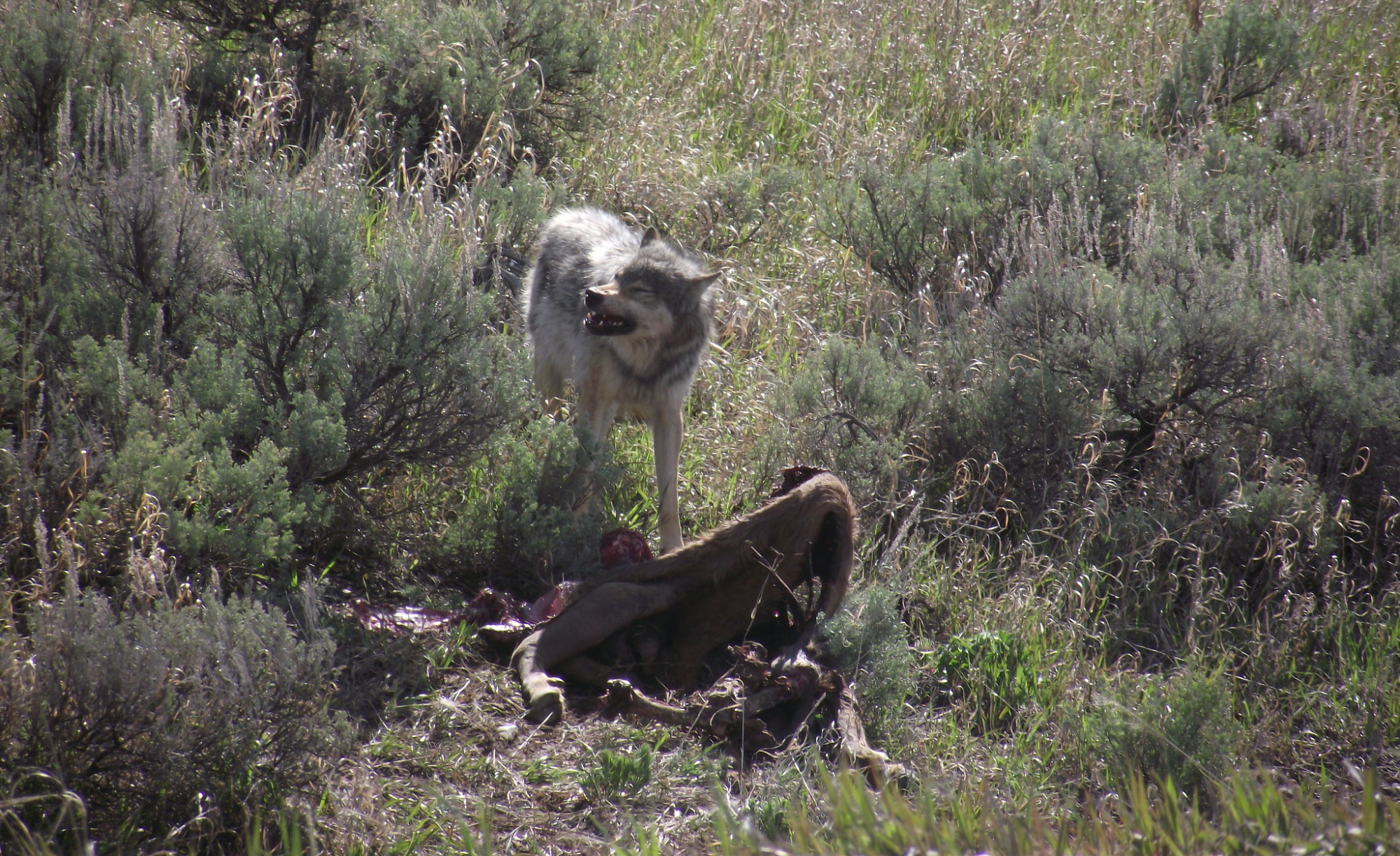
Through the human lens, a wolf’s style of eating might seem horrific. Accounts of wolves ripping fetuses and organs from the rear ends of living elk litter make for good campfire conversations, but there’s a perfectly natural reason for this behavior.
“Wolves are typically going for the organs first. [They’re] very nutritious and the most beneficial,” Rabe explains. “They’ll then dive into the main parts of their prey, including their hind end and abdominal cavity.”
Rabe points out that wolves eat up to 20 pounds of meat a day. An average wolf pack has roughly 6 to 8 members, but packs can carry 15 members or more. Those bigger packs need hundreds of pounds of meat to sustain themselves every week. Miraculously, wolves can also survive without food for a shockingly long time. When they get desperate, they might turn to other food sources and scavenge old kill sites for a meal.
A wolf pack’s hunting style enables it to take down all these large prey sources, Rabe says. Wolves have evolved to work together to take down an animal 10 to 20 times their size.
“Different pack sizes will be more efficient at certain types of prey,” Yellowstone Wolf Project research associate Kira Cassidy told OL for an article on how wolves hunt. “A pack that wants to hunt bison has to have nine to 13 wolves. A cool study by Dan MacNulty found that, if you have less than nine wolves, the chances of successfully hunting a bison are extremely low. More than 13 helps out a bit, but we have less and less data as packs get bigger.”
Wolf Diet FAQs
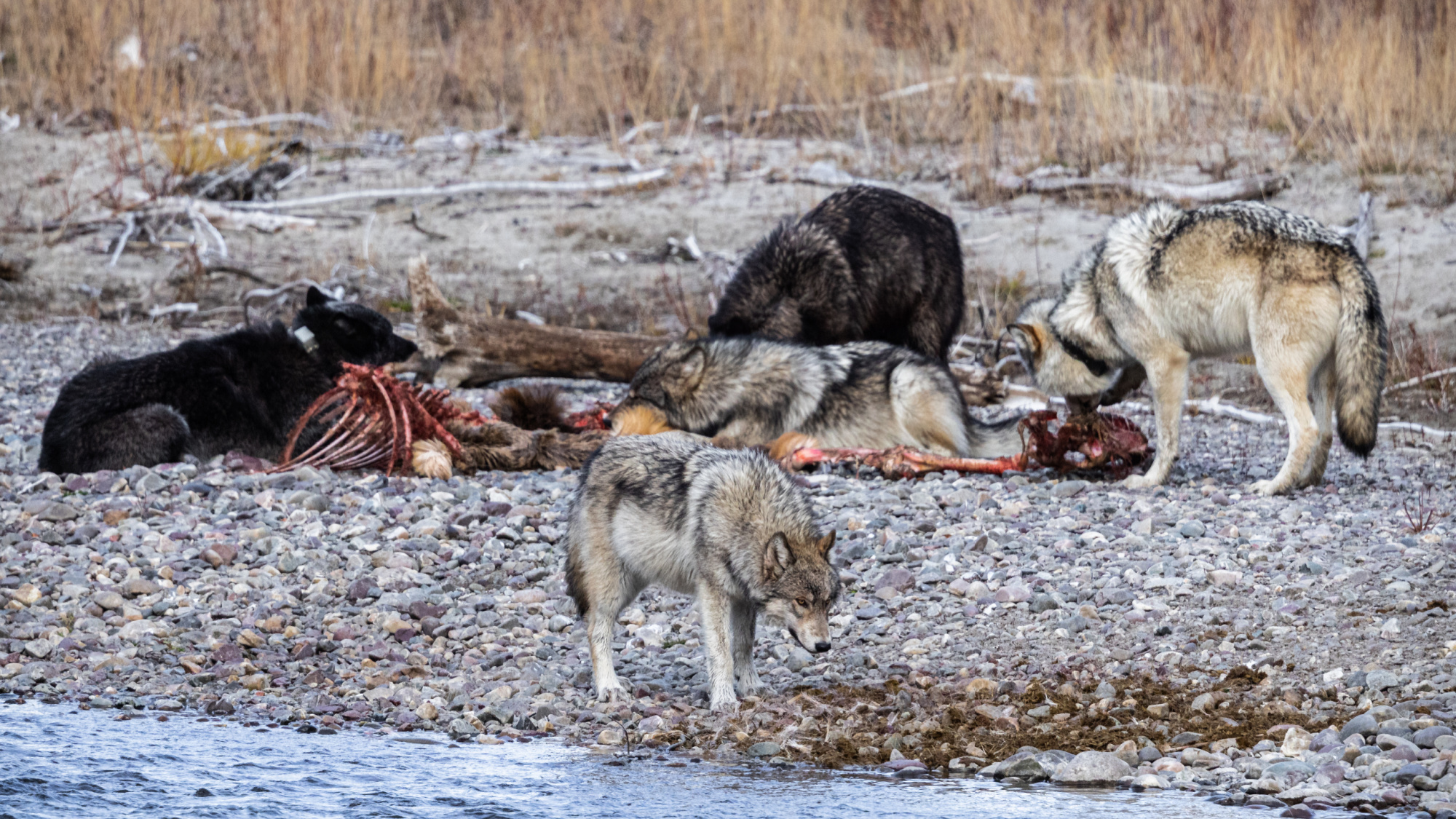
While wolves might kill each other over territory, scavenged food, and other natural sources of competition, they tend not to feed on the resulting meat. But since wolves are scavengers, a few scientists have reported coming across what looks like a wolf carcass that had been scavenged by other wolves, like this account of pups eating the bodies of their parents from biologist Tom Meier in 2009.
Since a wolf’s diet depends on where it lives, wolves are more likely to rely on non-meat food sources in some places than others. Rabe points out that wolves in Voyageurs National Park in Minnesota eat a lot of blueberries, for example. In Yellowstone, they rarely eat anything that didn’t once have a pulse.
No, wolves do not cache their kills like mountain lions do. They leave their kill sites out in the open, where other scavengers—including competing packs—often pick at them. Raptors and furbearers also get in on the feast and, eventually, the carcass is picked clean.
Wolves attack humans in a predatory manner very rarely. Usually, wolf attacks are a result of the wolf being captive, ill, or feeling threatened by human behavior, whether humans intend to mess with the wolf or not. Just like with any other large predator in the woods, it’s good to be aware of your surroundings and to be ready to protect yourself at a moment’s notice.
According to decades of research in the Greater Yellowstone Ecosystem, wolves can eat upwards of 11,000 elk in a year, biologist Doug Smith told WyoFile in 2017. Over 2,100 of those were within the park boundary, while the other 9,000 were on the outskirts. Biologists estimate that 108 wolves, comprising 10 packs, lived in the park as of January 2023, according to a report from the National Park Service. Cassidy puts the Greater Yellowstone Ecosystem population at around 500 wolves, according to a post she wrote for the Yellowstone to Yukon Initiative.
Final Thoughts on What Wolves Eat
Pinning down a one-size-fits-all answer to the question of “what do wolves eat” is impossible. Wolves are just like any other wild animal with a large range. Their diet changes pretty drastically depending on where they live, what season it is, and whether they’re hunting in packs or scraping together a meal on their own.
But no matter where wolves live, their general eating patterns are similar. From Alaska to the Upper Peninsula, wolves hunt large ungulates in packs, small prey, and young ungulates on their own, and supplement their diets as necessary with everything from birds to fish to blueberries.

